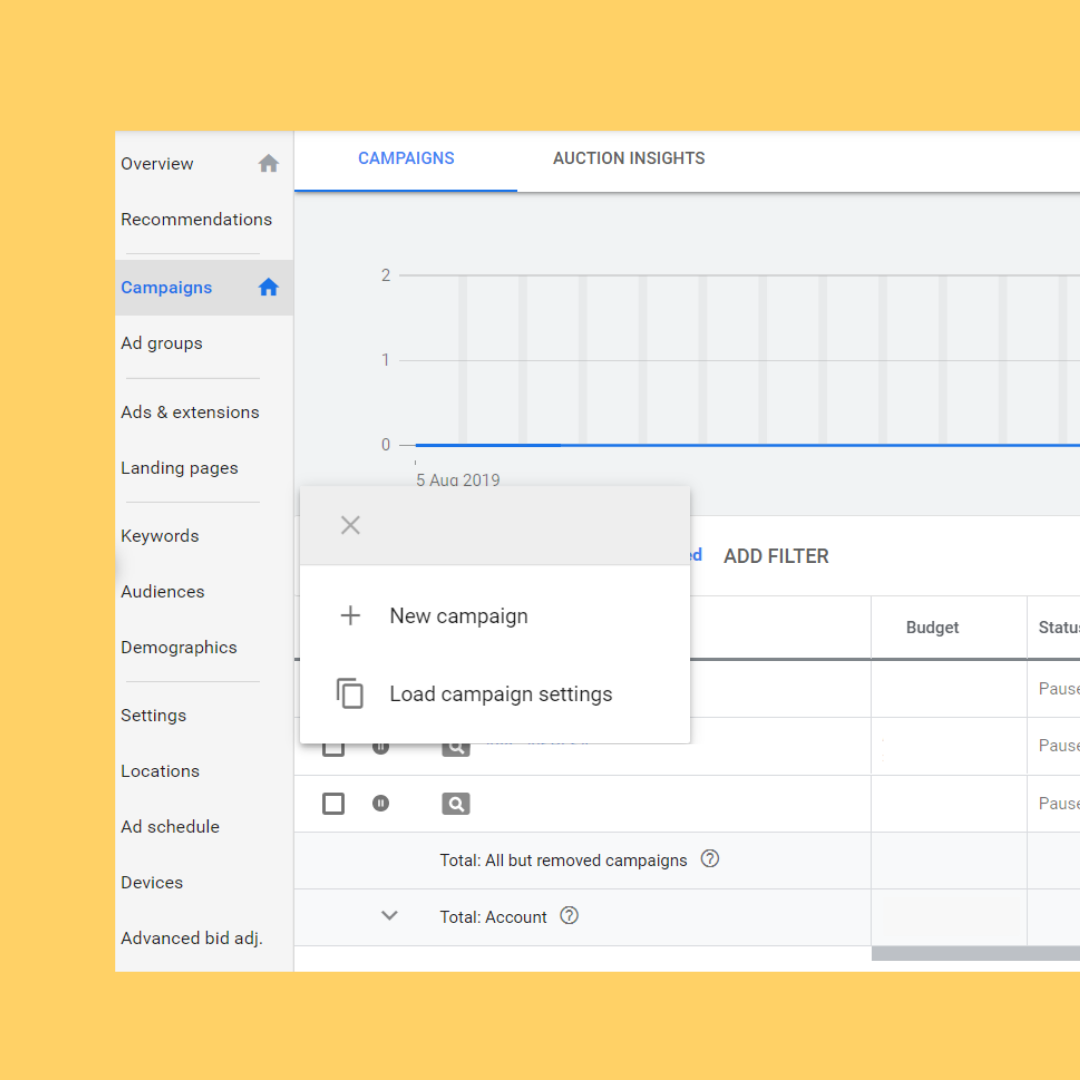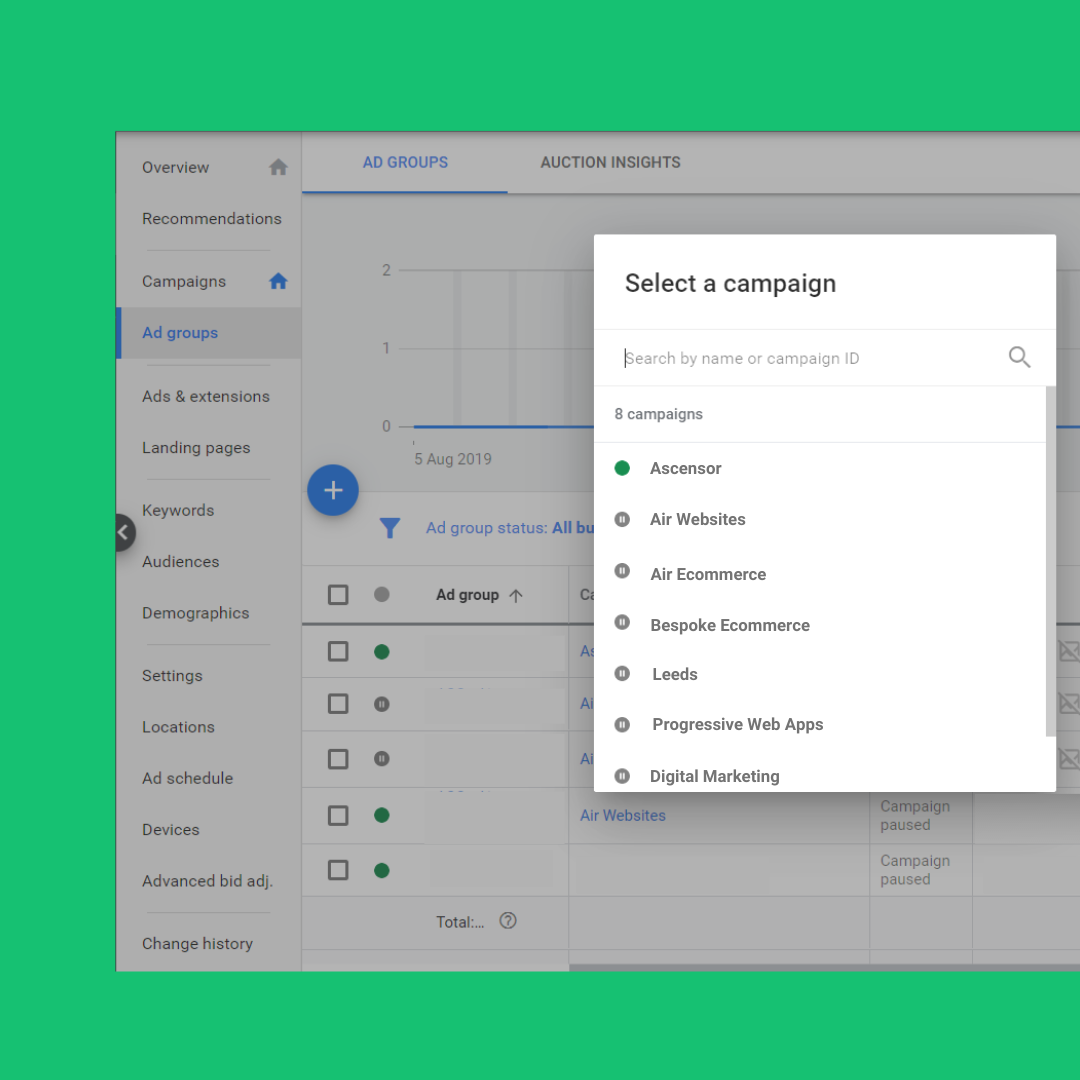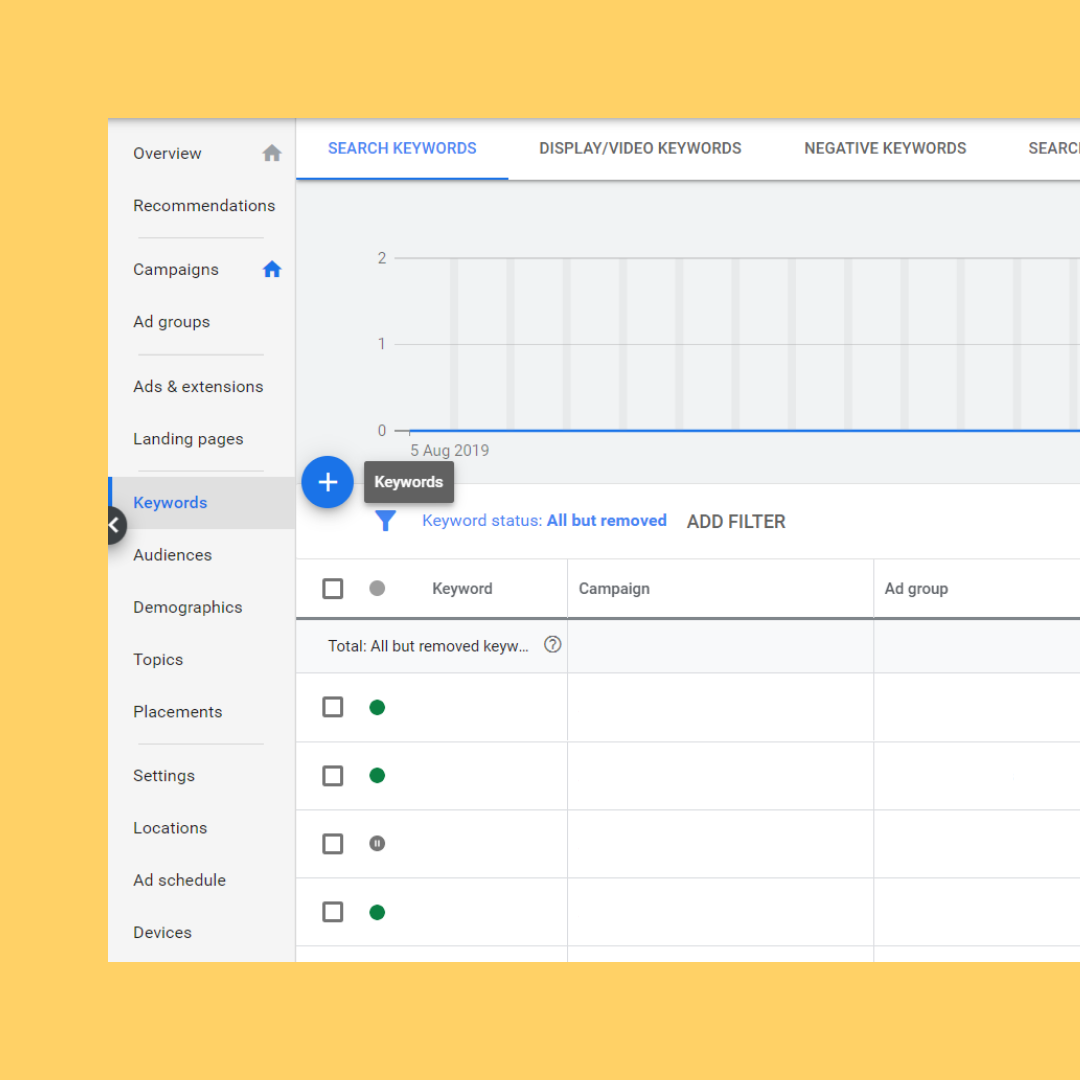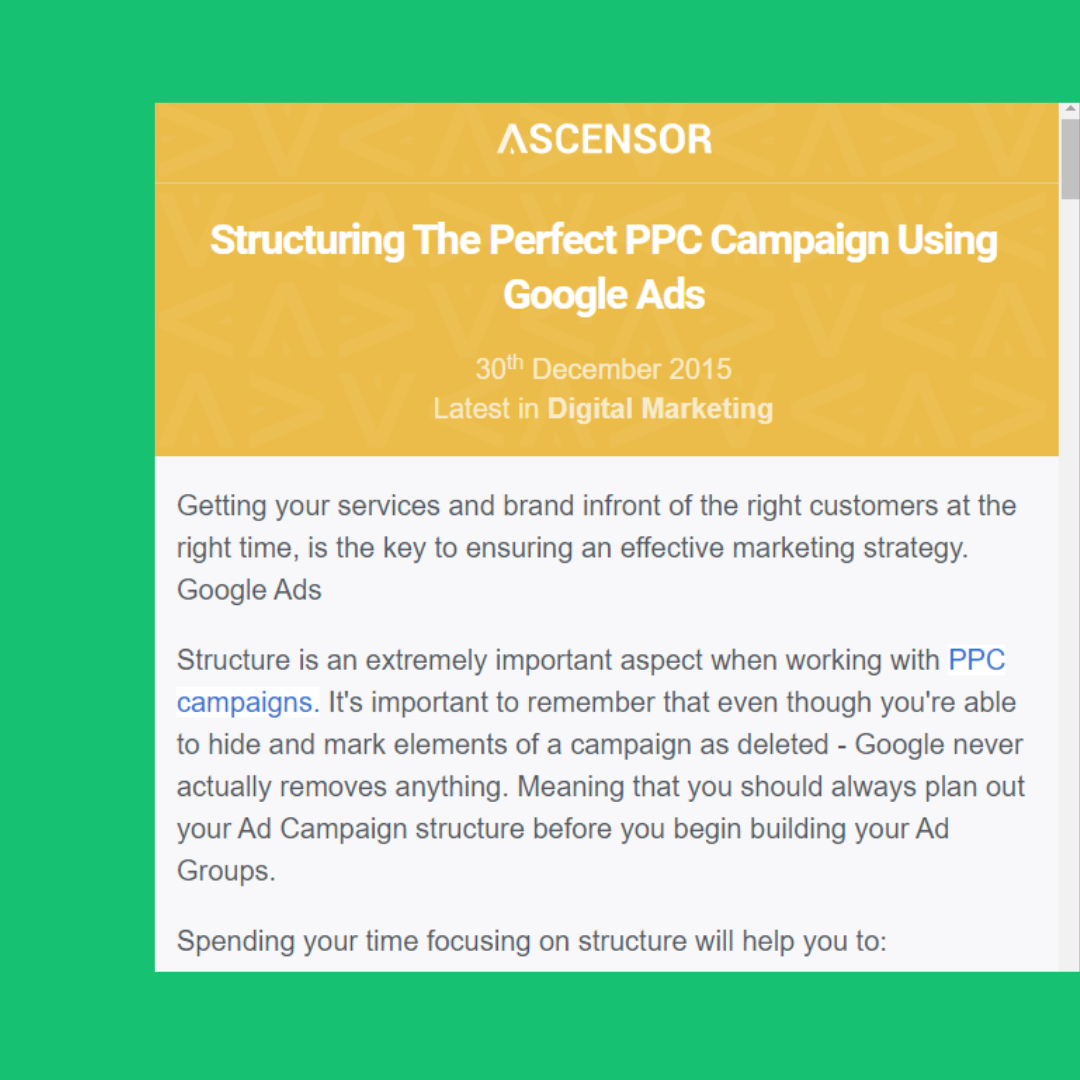Getting your services and brand infront of the right customers at the right time, is the key to ensuring an effective marketing strategy. Google Ads and PPC in general is the way to do just that.
Structure is an extremely important aspect when working with PPC campaigns. It's important to remember that even though you're able to hide and mark elements of a campaign as deleted - Google never actually removes anything. Meaning that you should always plan out your Ad Campaign structure before you begin building your Ad Groups.
Spending your time focusing on structure will help you to:
> Organise your adverts into logical groups to make managing the campaigns easier.
> Focus on the deliverables – what do you want someone to find when they get to your website, and what do you want the key points to be which lead to conversions?
> Work out whether you want to focus on geographies, devices and other criteria - helping you to get the best quality of visitor for your product, service and site.
> Build a campaign that focuses the keywords within the advert limitations, to help you to build click-through-rate and quality score.
> Facilitate ongoing testing of your adverts to enable continual improvement within your Ad Groups and keyword blocks.
> Enable efficient reporting and ongoing editing to help you to minimise duplication and competition within your campaigns.

Campaigns
This is the highest level of organisation within your account - where you can select budgets, geographies and device preferences. The number of campaigns in your account will vary and if you provide a national service you may use the different campaigns to offer different adverts by location. You can also use campaigns to organise your budgets according to product area or service. You may also decide to create a campaign for each brand and each product category to help you to better organise the ad groups that sit beneath.
There is a variety of ways to organise your campaigns, it's about finding the best way that works for your brand and services!

Ad Groups
Each campaign then contains ad groups and this is where you can focus on the specific products or services that you would like to offer to your target audience. The ad groups will then need to be set-up for each specific product/service as the keywords you choose will relate to these. If you have created campaigns for brands and product categories, then your ad groups will focus on the individual brands and individual products within the campaigns.
The ad groups will include a range of individual ads, where you then set your bid which decides when the keywords will trigger for the ads to appear. As mentioned, your ad groups will be organised by a common theme so plan this out first - and you're onto a good start!

Ad Text
The ad text is what the users sees, when the advert is triggered for them. Each ad group can have as many adverts as you like within it, but only one will show at a time and so we would recommend between 2 and 4 adverts per ad group. As the adverts display you will see the percentage serve d, allowing you to see which adverts Google deem to be better. This is judged predominantly by click-through-rate (the number of times the advert is clicked per advert impression), meaning that you can do split testing and focus on improving the adverts that are performing least well.
Beware! You have limited characters within the ad text, so it's important to choose your advert copy well - the key features include your company name, a call to action and your keyword is featured. But don't worry, we're here to help with compelling ad text so simply get in touch!

Keywords
We recommend a few keywords per ad group, this is because each keyword is given a quality score and the better the quality score, the more likely the advert is to show and the cheaper cost per click. Having lots of keywords in the ad group generally means that the advert is not specific enough for most of the keywords you have chosen and in the long run this will end up costing you more. If you need more keywords then you should create additional ad groups to contain them in - this is why planning is key.
Do your keyword research (using the Google Keyword Planner) and familiarise yourself with the different keyword modifiers (exact match, phrase match, broad match and broad match modifier) to get the most out of the keywords you choose. Think about adding negative keywords for obvious terms that you don’t want to show for (eg ‘cheap’ if you sell premium products), which will make sure you're reaching the right people!

Landing Page
Following your compelling ads, the user will arrive onto your website and one of the influencers of ad quality score is the bounce rate. If users land on your site following the ad and then immediately leaves, Google deems your content to be less relevant than the adverts suggests. An important point is to ensure that the destination meets expectations as this will likely lead to a conversion and generate better ROI.